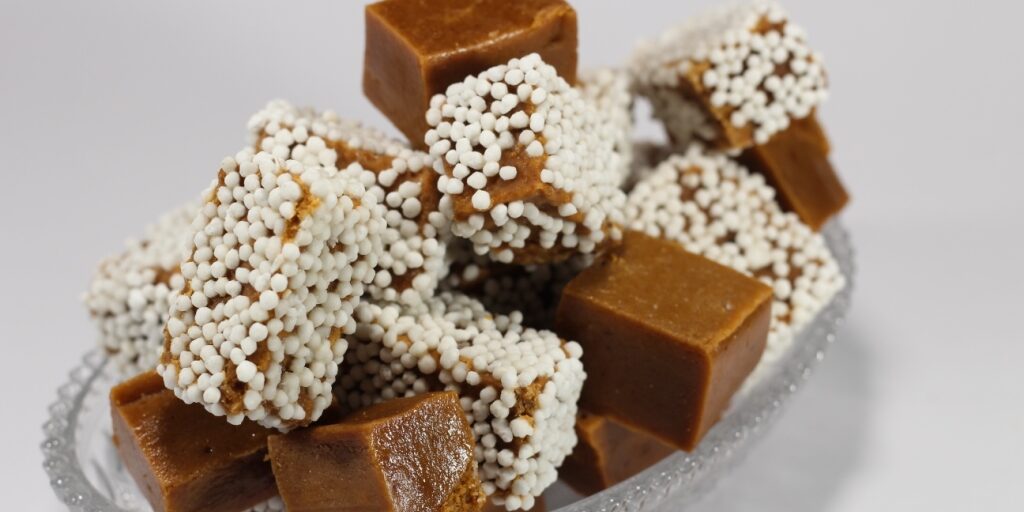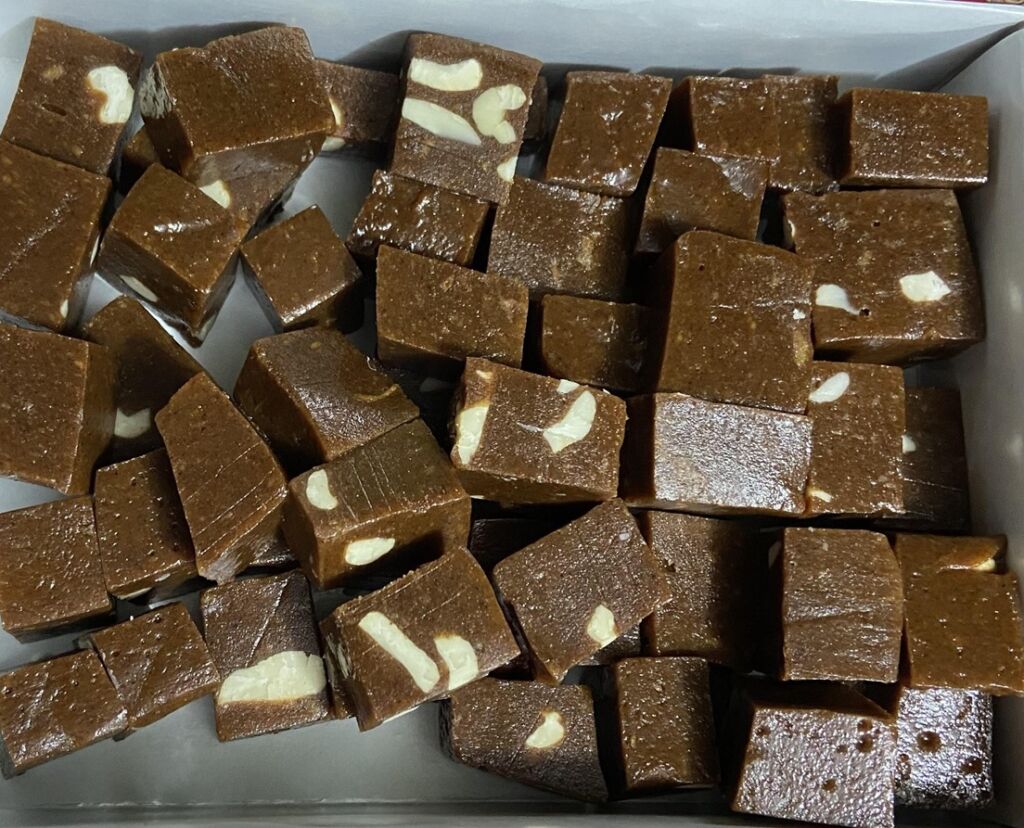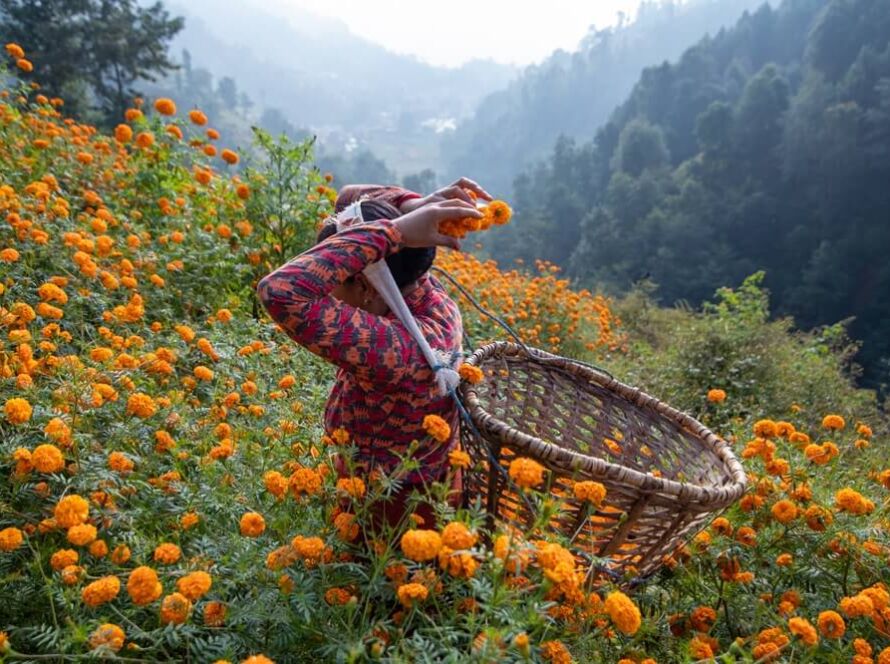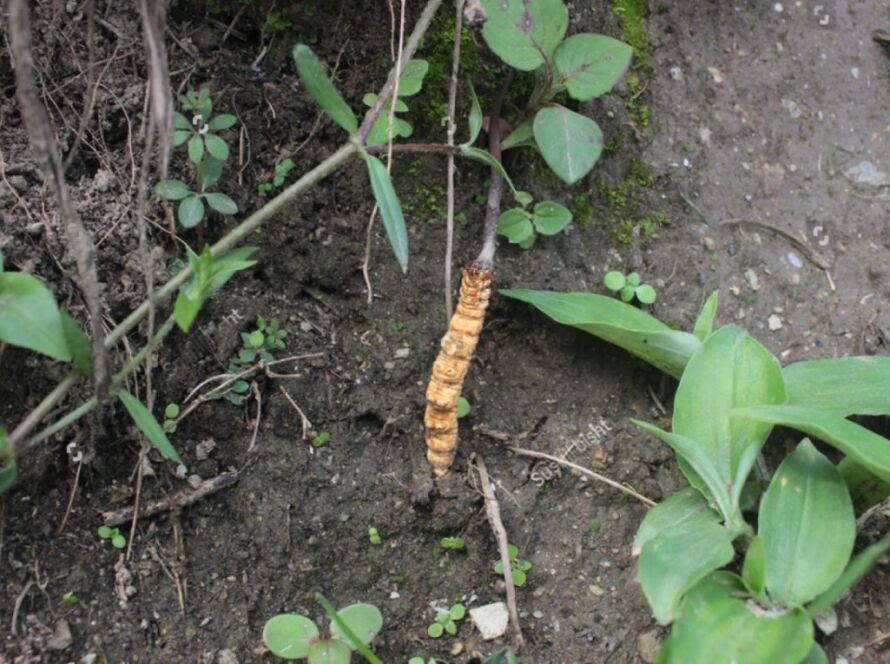Have you ever tasted a sweet that instantly tells the story of a region? Bal mithai, often called the chocolate of Kumaon, is more than just a dessert—it’s a cultural symbol of Uttarakhand. Made from khoya (reduced milk solids) and coated in tiny sugar balls, this simple-looking sweet carries a rich history and a taste that lingers long after the last bite.
From festive celebrations in Almora to being gifted as a token of love and goodwill, bal mithai has secured its place as one of the most beloved Uttarakhand sweets. In this guide, we’ll explore its fascinating history, share an authentic bal mithai recipe, discuss its nutritional value, and show you where to find the best versions in 2025.
🏔️The Origin of Bal Mithai
The history of bal mithai dates back to the late 19th century in Almora, a picturesque town in the Kumaon region of Uttarakhand. Local folklore suggests that the sweet was first created by halwais (traditional sweet makers) to offer at temples before gradually becoming a community favorite.
Over time, bal mithai became more than food—it turned into a Kumaoni mithai that carried identity and pride. It is often exchanged during weddings, festivals, and housewarming ceremonies. During Diwali, shops in Almora are lined with trays of freshly prepared bal mithai, symbolizing joy and togetherness.
Interestingly, older residents recall that in its earliest form, bal mithai wasn’t coated with sugar balls. That touch came later, giving it its signature texture and appearance. Today, it’s not only a festive delicacy but also an edible emblem of Kumaoni culture—a sweet you can’t leave Uttarakhand without tasting.

What Makes Bal Mithai Unique?
Unlike other Indian sweets like peda or barfi, bal mithai is immediately recognizable. Its uniqueness lies in three things:
- Appearance: A rectangular brown slab coated with tiny white sugar balls.
- Texture: Soft and fudgy inside, with a crunchy outer layer.
- Taste: Nutty, caramel-like sweetness with hints of roasted khoya (reduced milk).
- Shelf Life: Stays fresh for several days without refrigeration, making it perfect for travel.
This straightforwardness is what makes it stand apart from other Uttarakhand sweets. When you bite into an authentic bal mithai recipe, you’re tasting the mountain air, the heritage of Almora, and generations of sweet-making tradition.
👨🍳Bal Mithai Recipe: How to Make It at Home
Ingredients
-
500g fresh khoya (mawa)
-
200g powdered sugar (for cooking)
-
2 tbsp ghee
-
Sugar-coated white balls (khil/misri dana) for coating
Step-by-Step Instructions
-
Prepare the Khoya: Heat ghee in a heavy-bottom pan. Add khoya and stir continuously on low flame until it turns golden brown and leaves a nutty aroma.
-
Sweeten the Mix: Add powdered sugar to the khoya and mix well. Cook until the mixture thickens and no longer sticks to the sides.
-
Shape the Mithai: Let it cool slightly. Grease your palms with ghee and roll small portions into cylindrical or round shapes.
-
Coat with Sugar Balls: Spread the tiny sugar balls on a plate and roll each piece until fully covered.
-
Cool & Serve: Let the sweets set for a few hours. Store in an airtight container.
Tips and Variations
-
For a healthier twist, replace sugar with jaggery (though taste will vary).
-
Add a hint of cocoa or cardamom for fusion recipes.
-
If you don’t have access to Almora’s sugar balls, use small sugar pearls available online.
Now you know how to make bal mithai at home—a skill that connects your kitchen to the hills of Kumaon.
Cultural Significance of Bal Mithai
-
Festivals & Celebrations: Served during Diwali, marriages, and religious rituals.
-
Offerings to Deities: Many locals still present Bal Mithai in temples as prasad.
-
Gift Tradition: It is a must-buy souvenir for anyone visiting Almora or Nainital.
-
Symbol of Almora’s Identity: Just like Pithas in Bengal or Ghewar in Rajasthan, Bal Mithai is a cultural representation of Kumaoni pride.
Nutritional Benefits and Calories of Bal Mithai
Every piece of bal mithai (approx. 30g) contains about 150–180 calories, depending on size and sugar coating. While it’s not exactly diet food, it does provide some benefits:
-
Protein & Calcium: Thanks to khoya, it supports bone health and muscle strength.
-
Energy Booster: High in natural fats and sugar, perfect after long treks in the Himalayas.
-
Festive Indulgence: In moderation, it’s a guilt-free cultural treat.
If you’re counting calories, stick to one or two pieces. For a lighter version, try making it with reduced sugar or jaggery.
Travel Guide: Where to Find the Best Bal Mithai in Uttarakhand
-
Almora – The Birthplace
-
Popular shops: Khim Singh Mohan Singh Rautela, Brij Lal & Sons
-
Known for the most authentic recipe.
-
-
Nainital
-
Many sweet shops around Mall Road sell Bal Mithai as a popular tourist buy.
-
-
Dehradun & Haridwar
-
Specialty stores stock Almora-made Bal Mithai for pilgrims and travelers.
-
Variations of Bal Mithai
-
Singodi: Another Kumaoni sweet made with khoya wrapped in Malu leaves, often sold with Bal Mithai.
-
Dry Fruit Bal Mithai: Modern adaptations add almonds, cashews, or walnuts.
-
Mini Bal Mithai Bites: Convenient snack-sized portions for gifting.

Bal Mithai in Popular Culture
-
Tourism Promotion: Many Uttarakhand travel brochures highlight Bal Mithai as a must-try local specialty.
-
Media Mentions: Featured in food documentaries and regional travel shows.
-
Diaspora Demand: Uttarakhandis settled abroad often carry Bal Mithai as a nostalgic reminder of home.
👨🍳Buying & Storing Tips
-
Authenticity Check: Original Bal Mithai has a deep brown shade, not light caramel.
-
Storage: Keep in an airtight container at room temperature; lasts 7–10 days.
-
Online Purchase: Many Almora shops now sell via e-commerce, shipping Bal Mithai pan-India.
Tourist Experience – Bal Mithai Trail
If you are visiting Uttarakhand, make Bal Mithai part of your journey:
-
Day 1 – Arrive in Almora, explore the local markets.
-
Day 2 – Visit a traditional sweet shop and watch Bal Mithai being prepared.
-
Day 3 – Take home packs of Bal Mithai & Singodi as souvenirs.
FAQs on Bal Mithai
Q1: Why is Bal Mithai called the ‘Chocolate of Almora’?
Because of its brown appearance and rich, fudgy taste, locals often call it Almora’s version of chocolate.
Q2: Can Bal Mithai be ordered online?
Yes, many reputed Almora-based shops offer online orders with nationwide delivery.
Q3: Is Bal Mithai vegetarian?
Yes, it is made from milk solids (khoya) and sugar, without any non-vegetarian ingredients.
Q4: Which is better – Bal Mithai or Singodi?
Both are Kumaoni specialties; Bal Mithai is fudgy while Singodi has a smoky flavor due to leaf wrapping.
Q5: What is the best season to try Bal Mithai?
Available year-round, but winter enhances its rich, dense taste.
Conclusion
Bal mithai isn’t just a sweet—it’s heritage in every bite. From its humble beginnings in Almora to being enjoyed across India and even abroad, it remains a beloved Kumaoni mithai that reflects the culture of Uttarakhand.
Whether you try the bal mithai recipe at home or buy it from a traditional shop, this sweet deserves a place on your festive table in 2025.
👉 Have you tried making bal mithai at home? Share your experiences in the comments and follow tehrigarhwal.com for more stories on Uttarakhand sweets and traditions.


